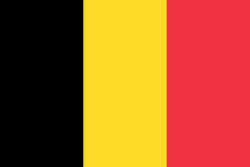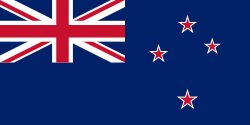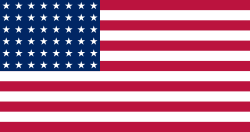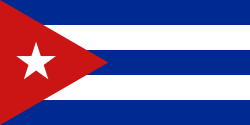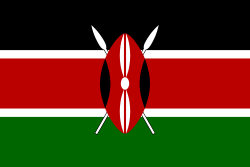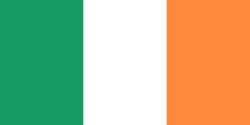Albert Young (Boxer)
| Albert Young | |||||||
|---|---|---|---|---|---|---|---|
| Daten | |||||||
| Geburtsname | Albert Young | ||||||
| Geburtstag | 28. September 1877 | ||||||
| Geburtsort | Lauterecken, | ||||||
| Todestag | 22. Juli 1940 | ||||||
| Todesort | San Francisco, | ||||||
| Nationalität | |||||||
| Gewichtsklasse | Weltergewicht | ||||||
| Größe | 1,63 m | ||||||
| Medaillenspiegel | |||||||
| |||||||
| |||||||
Albert Young (* 28. September 1877 in Lauterecken, Rheinland-Pfalz als Albert Jung; † 22. Juli 1940 in San Francisco, Kalifornien) war ein US-amerikanischer Boxer im Weltergewicht.
Young nahm an den Olympischen Sommerspielen im Jahre 1904 in St. Louis teil und eroberte mit Siegen über Jack Eagan und Harry Spanjer die Goldmedaille.
Nach seiner Boxkarriere wurde er 1906 Promoter in San Francisco. Young arbeitete zunächst im Association Club, einem kleinen Club, in dem viele Boxer aus der Bay Area ihre Karrieren begannen. Im Jahr 1923 verlegte Young seine Promotion in die National Hall.
1940 starb Young, der an Anämie und Geschwüren litt, nach mehreren erfolglosen Bluttransfusionen. Viele seiner erhaltenen Blutspenden stammten von ehemaligen Boxern, die Young gefördert hatte.
Weblinks
| Personendaten | |
|---|---|
| NAME | Young, Albert |
| KURZBESCHREIBUNG | US-amerikanischer Boxer im Weltergewicht |
| GEBURTSDATUM | 28. September 1877 |
| GEBURTSORT | Lauterecken, Rheinland-Pfalz |
| STERBEDATUM | 22. Juli 1940 |
| STERBEORT | San Francisco, Kalifornien |
Auf dieser Seite verwendete Medien
Pictograms of Olympic sports - Boxing. This is unofficial sample picture. Images of official Olympic pictograms for 1948 Summer Olympics and all Summer Olympics since 1964 can be found in corresponding Official Reports.
Flag of the Germans(1866-1871)
Flag of the Germans(1866-1871)
Autor/Urheber: B1mbo, Lizenz: CC BY-SA 2.5
Zeichnung einer Goldmedaille, basierend auf Olympic rings.svg.
Autor/Urheber: B1mbo, Lizenz: CC BY-SA 2.5
Zeichnung einer Silbermedaille, basierend auf Olympic rings.svg.
Autor/Urheber: B1mbo, Lizenz: CC BY-SA 2.5
Zeichnung einer Bronzemedaille, basierend auf Olympic rings.svg.
Olympic Rings without "rims" (gaps between the rings), As used, eg. in the logos of the 2008 and 2016 Olympics. The colour scheme applied here was specified in 2023 guidelines.
Olympic Rings without "rims" (gaps between the rings), As used, eg. in the logos of the 2008 and 2016 Olympics. The colour scheme applied here was specified in 2023 guidelines.
US Flag with 45 stars. In use 4 July 1896–3 July 1908. Created by jacobolus using Adobe Illustrator, and released into the public domain. This flag was used during the Spanish-American War.
US Flag with 48 stars. In use for 47 years from July 4, 1912, to July 3, 1959.
Flagge Finnlands
Flag of Second Polish Republic and later People's Republic of Poland in period from March 29, 1928 to March 10, 1980. Red shade used here is HTML "vermilion" #E34234. Proportion 5:8.
Flag of Second Polish Republic and later People's Republic of Poland in period from March 29, 1928 to March 10, 1980. Red shade used here is HTML "vermilion" #E34234. Proportion 5:8.
Flag of Italy from 1946 to 2003, when exact colors were specified.
Die Olympiaflagge der gesamtdeutschen Mannschaft von 1960 und 1964, sowie beider deutschen Mannschaften 1968.
Die Olympiaflagge der gesamtdeutschen Mannschaft von 1960 und 1964, sowie beider deutschen Mannschaften 1968.
Die Staatsflagge der Deutschen Demokratischen Republik, vom 1. Oktober 1959 bis 3. Oktober 1990
Man sagt, dass der grüne Teil die Mehrheit der katholischen Einwohner des Landes repräsentiert, der orange Teil die Minderheit der protestantischen, und die weiße Mitte den Frieden und die Harmonie zwischen beiden.
US Flag with 45 stars. In use 4 July 1896–3 July 1908. Created by jacobolus using Adobe Illustrator, and released into the public domain. This flag was used during the Spanish-American War.
Flag of Romania (24 September 1952 - 21 August 1965)

Construction sheet of the Flag of Romania as depicted in Decree nr. 972 from 5 November 1968.
- l = 2/3 × L
- C = 1/3 × L
- S = 2/5 × l









